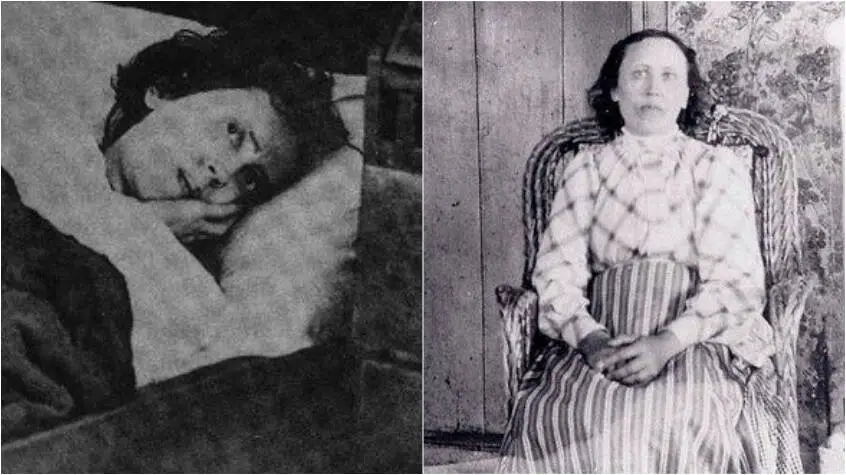 the realm of extraordinary medical mysteries, the case of Karolina Olsson stands as a testament to the resilience of the human body and the enigmatic nature of sleep disorders. For an astonishing period of 32 years, Karolina Olsson, a Swedish woman born in the 19th century, slept continuously, baffling the medical community and captivating the public’s imagination. This article delves into the extraordinary story of Karolina Olsson, shedding light on her condition, the challenges she faced, and the medical insights gained from her unique case.
the realm of extraordinary medical mysteries, the case of Karolina Olsson stands as a testament to the resilience of the human body and the enigmatic nature of sleep disorders. For an astonishing period of 32 years, Karolina Olsson, a Swedish woman born in the 19th century, slept continuously, baffling the medical community and captivating the public’s imagination. This article delves into the extraordinary story of Karolina Olsson, shedding light on her condition, the challenges she faced, and the medical insights gained from her unique case.
The Enigmatic Sleeping Beauty
Karolina Olsson, born in 1842 in Sweden, lived an extraordinary life marked by an incomprehensible sleep disorder. At the age of 13, she fell into a deep slumber and remained asleep for an astounding 32 years. During this period, she was confined to her bed, seemingly unaware of the world around her. Her condition captivated both the medical community and the public, giving rise to numerous theories and speculations about the underlying causes and potential remedies.
Throughout the decades of her prolonged sleep, Karolina Olsson’s family cared for her tirelessly, hoping for a breakthrough or a miraculous awakening. Her case attracted widespread attention, and she became known as the “Sleeping Beauty” of Sweden. Medical experts from various fields were perplexed by her condition, as it defied conventional understanding of sleep disorders and challenged the limits of human resilience.
Despite the physical and emotional toll her condition took on her family, Karolina Olsson’s unwavering presence in the public eye sparked scientific curiosity and spurred research into understanding the complexities of sleep and its impact on human health. Her case remains a haunting reminder of the mysterious and often misunderstood realm of sleep disorders.
The Elusive Causes
Unraveling the causes behind Karolina Olsson’s unprecedented sleep duration proved to be a challenging task for medical professionals of the time. Multiple theories were proposed, including those relating to neurological conditions, psychological trauma, and hormonal imbalances. However, without access to modern diagnostic tools and advancements in sleep medicine, understanding the underlying mechanisms remained elusive.
One prevalent theory at the time suggested that Karolina Olsson’s sleep was a result of hysterical catalepsy, a condition characterized by periods of immobility and unconsciousness. This explanation, though widely debated, failed to provide a comprehensive understanding of her condition, as it did not account for the extraordinary length of her sleep episodes.
The lack of concrete knowledge surrounding Karolina Olsson’s case highlights the challenges faced by medical professionals in diagnosing and treating rare and complex sleep disorders. It also emphasizes the importance of ongoing research and advancements in sleep medicine to shed light on such extraordinary cases and provide solutions for those affected by similar conditions.
The Impact on Sleep Medicine
Karolina Olsson’s unique case, though tragic in its impact on her own life and that of her family, had a lasting effect on the field of sleep medicine. Her condition sparked a wave of research and scientific inquiry, leading to a deeper understanding of sleep disorders and their physiological and psychological implications. Her case opened doors to exploring the intricacies of sleep patterns, the role of the brain, and the factors that influence sleep-wake cycles.
Karolina Olsson’s case also underscored the importance of providing support and resources to individuals suffering from sleep disorders. Her prolonged sleep duration served as a catalyst for advancements in patient care, emphasizing the need for specialized medical attention, psychological support, and the development of tailored treatment approaches.
Furthermore, the awareness generated by Karolina Olsson’s case helped dispel myths and misconceptions surrounding sleep disorders. It highlighted the need for public education and increased understanding of the impact of sleep on overall health and well-being. Her story prompted conversations about the significance of sleep hygiene, early intervention, and the necessity of continued research to unlock the mysteries of sleep disorders.
Legacy and Remembrance
Karolina Olsson’s extraordinary journey came to an end in 1908 when she passed away at the age of 66. Her life, marked by an unprecedented sleep duration, left an indelible mark on medical history and the public’s consciousness. Her story continues to be retold as a reminder of the complexities of sleep disorders and the ongoing pursuit of knowledge in the field of sleep medicine.
The legacy of Karolina Olsson serves as a call to action for continued research and advancements in understanding and treating sleep disorders. Her case acts as a beacon of hope for those affected by similar conditions, inspiring medical professionals and researchers to explore innovative therapies and provide improved support for individuals with sleep-related challenges.
In conclusion, Karolina Olsson’s incredible story as the woman who slept for 32 years remains a captivating tale that transcends time. Her condition brought attention to the enigmatic realm of sleep disorders, sparked scientific inquiry, and prompted advancements in sleep medicine. Her legacy serves as a reminder of the boundless complexity of the human body and the ongoing quest to unlock the mysteries of sleep.
Avid Writer with invaluable knowledge of Humanity!
Upcoming historian with over 30 million views online.
“You make your own life.”





